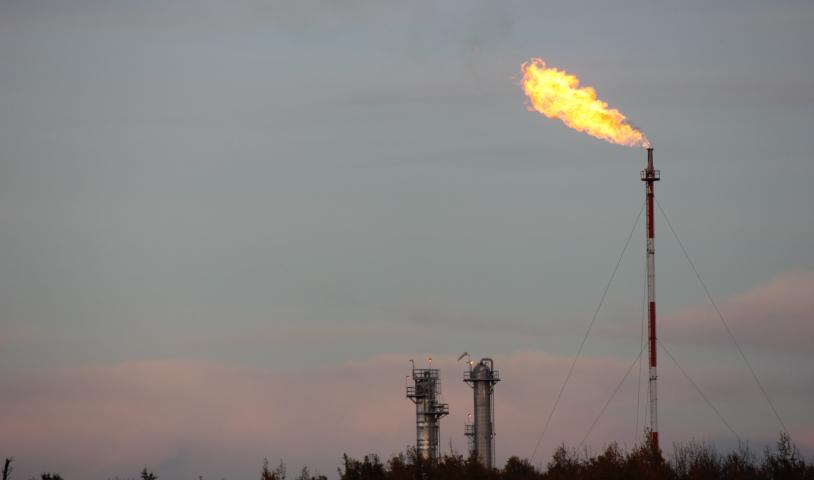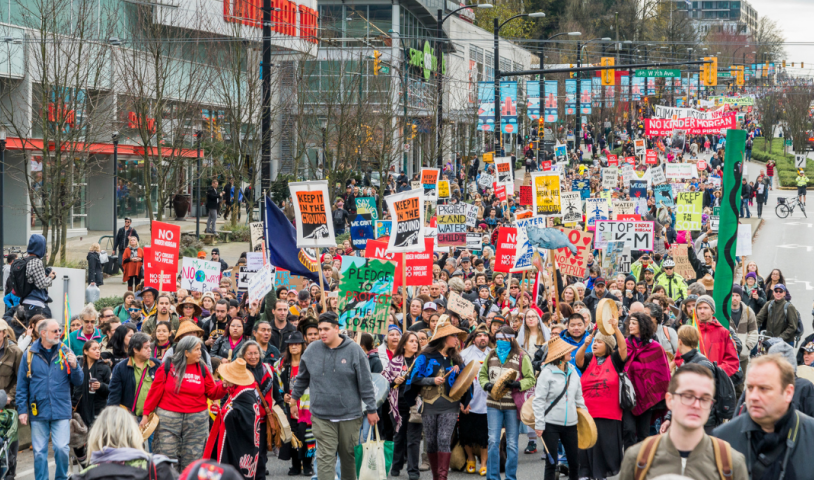Eric Doherty: Shifting context puts billion‑dollar Pattullo Bridge project on shaky footing
Wednesday, August 1, 2012
TransLink’s plan to replace the four-lane Pattullo Bridge with a new six-lane bridge at an estimated cost of up to $1 billion has not attracted much attention, with the exception of some concerned residents in New Westminster and Surrey.
But the constantly evolving movement against tar-sands expansion is set to make this and other roadway expansion projects a new front in the battle over pipelines and tankers.
So far, the campaign to block the Kinder Morgan and Enbridge tar-sands pipeline and tanker proposals have mainly focused on the potential for spills in the context of exports. But campaigners are finding that many people already understand that our cars, trucks, and airplanes run on dirty tar-sands oil and are demanding to know what the solutions are.
“The number one thing people ask me is how they are going to get to work without tar-sands oil to fuel their cars” said Ben West, healthy communities campaigner for the Wilderness Committee.
But it's not only groups opposed to tar-sands expansion who are asking hard questions about transportation spending priorities. Like Vancouver, it appears the City of New Westminster won’t bend to provincial pressure to widen roads connecting to the freeway network.
There once was a plan, where two extra lanes of traffic would go from a new wider Pattullo Bridge. The provincial government’s Gateway expansion scheme included building a new arterial road, the North Fraser Perimeter Road (NFPR), on the banks of the Fraser River from the Queensbourough Bridge through New Westminster to Highway 1 near the Port Mann Bridge.
From the outset there were two big problems with the NFPR. The first was that it would go through a built-up urban area with well established neighbourhoods and shiny new condo towers. The second was that TransLink had no way to pay for the project, except by dipping into scarce transit funds and going hat in hand to Ottawa and Victoria for matching infrastructure grants—money that could otherwise fund transit infrastructure or other priorities.
As I write, TransLink’s financial woes are ongoing, a crisis contributed to by Premier Christy Clark’s refusal to approve new funding sources, such as an increased carbon tax or a vehicle levy.
Hundreds of New Westminster residents expressed their opposition when TransLink tried to build the first few hundred meters of the NFPR at an estimated cost of $175 million. The shelving of the NFPR came as a bit of a surprise: at one of a long string of packed public meetings, Sany Zein, TransLink’s director of roads, calmly announced that the NFPR project was dead. The room erupted into applause, and a half-billion-dollar segment of the Gateway Program was erased from the region’s planning maps.
Or at least in theory it was. In reality, it is still clearly marked on the Gateway Program’s maps showing the Pattullo Bridge linking the North and South Perimeter Roads.
Under pressure from concerned residents, the City of New Westminster has worked to defend their interests on the Pattullo Bridge. The city withdrew from TransLink’s consultation on the configuration of a six-lane bridge replacement, holding their own consultations sessions on a new Master Transportation Plan. It was intended to boost walking, cycling, and transit ridership and improving the quality of life in New Westminster’s streetcar-era communities.
The Georgia Straight quoted Jim Lowrie, New Westminster’s director of engineering, saying: “Simply speaking, the road network in the city of New Westminster is not designed to accommodate the traffic that will be brought over by a six-lane bridge.”
Some Surrey residents have also stepped up in opposition to TransLink’s six-lane bridge proposal.
“Global warming and the end of cheap oil means we need to focus on improving transit instead of roadway expansion for cars and trucks” said Steve Burke, the spokesperson for the Surrey Citizens Transportation Initiative.
With the unprecedented heat wave, drought, and fires south of the border, the public is waking up to the reality of global warming as an immediate crisis and are looking for real action.
A six-lane Pattullo Bridge would end up creating an extremely expensive bottleneck, similar to the one about to be created when the newly expanded Highway 1 opens and the traffic hits Grandview Highway and other East Vancouver streets that are already at capacity.
At one point, Translink was quite clear about what needed to be done with the Pattullo: it needed a major overhaul with earthquake strengthening and safety upgrades. They proposed paying for this work with tolls.
But once the provincial government under Gordon Campbell announced that only new bridges could be tolled, TransLink suddenly announced that the Pattullo would be replaced with a new toll bridge.
Ever since this about-face, New Westminster residents have regarded with suspicion TransLink's assertions that it is impossible or impractical to upgrade the existing bridge. They are right to be suspicious, given the dubious record of TransLink’s road-building division.
TransLink spokespeople have also repeatedly claimed that traffic conditions on the existing bridge are unsafe, while ignoring the dramatic safety improvement since TransLink started closing the inside lanes at night to prevent road racing and extreme speeding.
Apparently, this simple measure has worked, and there have been no fatal crashes since the night-time lane closures started.
Like the Lions Gate Bridge, an upgrade to the Pattullo would be technically challenging, but far less expensive than replacement. A four-lane replacement would also be considerably less expensive than a six-lane bridge.
TransLink, under the direction of B.C.'s transportation and infrastructure minister Blair Lekstrom, recently adopted a more conciliatory stance on the Pattullo—agreeing to look at all practical solutions, which apparently includes upgrading the existing bridge. This could delay a firm decision until after the next provincial election in May 2013.
Thus, the decision is likely to be made under an NDP government, which is, in turn, likely to return control of the TransLink board to local mayors and councillors.
This would change the system imposed by the B.C. Liberals, who replaced municipal politicians with unelected representatives appointed by business-friendly allies.
By the time the next provincial election takes place, there could also be a whole new context to transportation spending decisions.
For its part, the Wilderness Committee has stepped up with one of the first solutions-oriented campaigns against tar-sands expansion. The Transit Not Tankers petition calls for a “shift from spending our money on new highways to investing it in public transit and passenger rail".
Other environmental groups will follow suit with similar campaigns if they want to be seen as having real solutions.
After May 2013, the decision about building a six-lane Pattullo replacement, upgrading the existing Pattullo Bridge, or building a four-lane replacement may come before a TransLink board once again composed of elected municipal politicians. Given the wave of opposition to tar-sands expansion, and the unmet demand for improved transit in Surrey and around the region, it isn't far-fetched to imagine that the six-lane option will be soundly rejected.
Eric Doherty is a transportation planner and coauthor of the Wilderness Committee-Canadian Centre for Policy Alternatives study "Transportation Transformation: Building Complete Communities and a Zero-Emission Transportation System in B.C."
Photo: The Pattullo Bridge connects New Westminster with North Surrey just east of TransLink's Skybridge. Image by Payton Chung.





